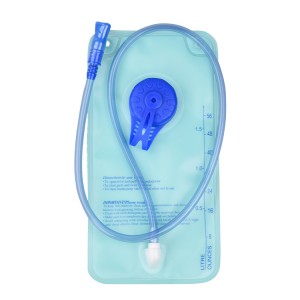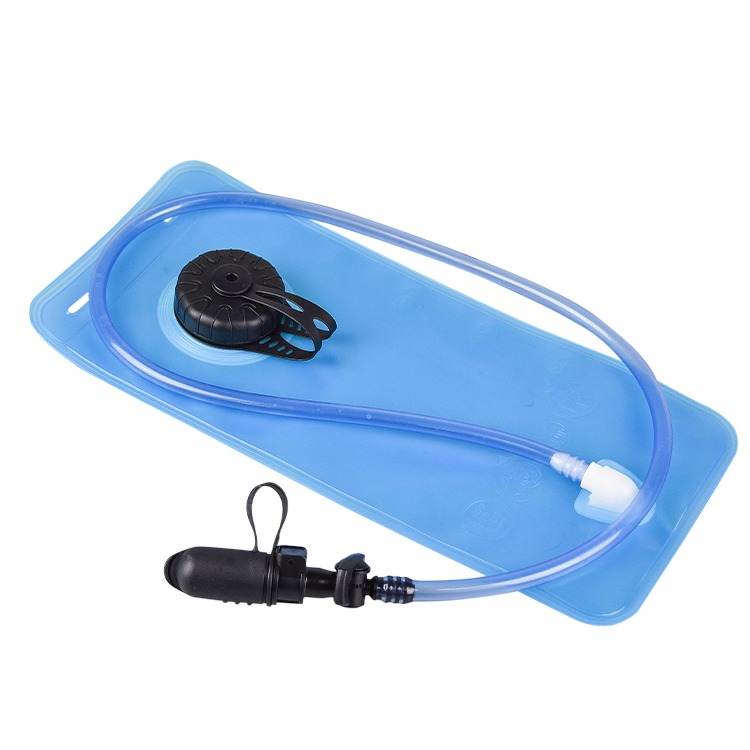Hydration bladders and water bags are two popular options for carrying water while on-the-go. Both are convenient and efficient ways to stay hydrated during outdoor activities such as hiking, camping, or biking. However, there are some key differences between the two that are important to consider before making a purchase. We will dive deeper into the differences between hydration bladders and water bags, their pros and cons, and which one may be the best choice for your specific needs.
Hydration bladders, also known as hydration reservoirs or water bladders, are essentially containers made of flexible plastic or rubber material that can hold a large volume of water. These bladders typically range in size from 1 liter all the way up to 3 liters or more, making them perfect for longer outdoor excursions. They are designed to be worn inside a backpack or hydration pack, with a long drinking tube that connects to the bladder through a small opening. This allows the user to sip water without having to take off their backpack or stop their activity.
On the other hand, water bags, also known as water bottles or canteens, are a more traditional choice for carrying water. They are typically made of hard plastic or metal and come in a variety of sizes, ranging from 12 ounces to 64 ounces or more. Water bags usually have a wide mouth opening for easy filling and a screw-on cap or lid to prevent spillage. They are designed to be carried by hand or attached to a backpack using a carabiner.
Now that we have a general understanding of what hydration bladders and water bags are, let’s explore their differences in more detail.
1. Design: One of the main differences between hydration bladders and water bags is their design. Hydration bladders are designed to be worn inside a backpack, while water bags are meant to be hand-carried or attached to a backpack. This means that hydration bladders usually have a more streamlined shape, while water bags come in a variety of shapes and sizes.
2. Capacity: As mentioned before, hydration bladders can hold a larger volume of water compared to water bags. This is due to their flexible design, which allows them to expand and hold up to 3 liters or more of water. This makes hydration bladders a better option for longer outdoor activities where access to water may be limited. On the other hand, water bags typically have a smaller capacity, making them more suitable for shorter activities or as a backup source of water.
3. Durability: In terms of durability, hydration bladders and water bags differ in their materials used. Hydration bladders are made of BPA-free and food-grade materials such as polyurethane or polyethylene, which are both durable and resistant to punctures. Water bags, on the other hand, can be made of hard plastic or metal, which may not hold up as well in rugged outdoor environments.
4. Cleaning and maintenance: One downside of hydration bladders is that they can be challenging to clean and maintain due to their shape and design. Some have small openings, making it difficult to reach inside and thoroughly clean them. On the other hand, water bags have wider openings, which make them easier to clean. Furthermore, hydration bladders require more maintenance, such as drying them thoroughly to prevent mold growth, while water bags only need a quick rinse and air dry.
5. Convenience: Convenience is another significant factor to consider when deciding between a hydration bladder and water bag. Hydration bladders have the advantage of allowing the user to drink without having to stop their activity or remove their backpack. This can be especially beneficial during intense physical activities, such as hiking or biking. Water bags, on the other hand, require the user to stop and take off their backpack to access the water, which can be inconvenient in some situations.
So, which one is the better choice between hydration bladders and water bags?
The answer is: it depends on your specific needs and preferences. If you need to carry a large volume of water for an extended period, or you prefer the convenience of sipping water without stopping your activity, a hydration bladder may be the better option for you. However, if you prefer a more durable and easier to clean option or need to carry less water, a water bag may be the better choice.
FUJIAN SBS SIBO TECHNOLOGY CO.,LTD is an import and export company with a large production line covering high-end customized products, outdoor and sports projects. Our main products include Hydration bladder,Fishing Tackle & Tool Box,waterproof camping backpack,Waterproof duffel bag,Soft Cooler,water bladder,Waterproof bag & backpack, etc. We adopt modern production management and have our own factory and several affiliated factories.
All of our company’s products have passed the latest international environmental protection requirements, such as EN71, FDA, LFGB, BPA, 6P, PAHS, and other environmental certifications, both nationally and internationally. We welcome customer designs and ideas, and can customize according to their specific requirements.
FAQs Guide:
What is a hydration bladder used for?
Water bladders are designed to transport water while also making drinking more convenient and efficient. Hydration bladders can be used for hiking, trekking, camping, biking, running and many other outdoor activities.
What are the benefits of hydration bladder?
You can carry more water in a more efficient and comfortable way using bladders compared to using bottles. If you have a lot of distance to cover, it is very hot, or if you sweat a lot and therefore need to carry large quantities of water, we would highly recommend using bladders.
Are plastic hydration bladders safe?
One of the best materials for hydration bladders is polyethylene because it is safer than for example polyurethane as polyurethane often makes the water taste a bit like plastic. You should definitely avoid bladders that contain BPA (Bisphenol A), BPS (Bisphenol S) or phthalate because they are toxic to the human body.
Are there hydration bladders designed for specific activities, such as hiking, cycling, or running, with features tailored to those needs?
Yes, there are it designed for specific activities, such as hiking, cycling, or running. These bladders typically feature features such as a wide mouth opening for easy filling, a bite valve for easy drinking, and a secure closure system to prevent leaks. They may also have features such as an insulated sleeve to keep water cool, a clip to attach to a backpack, and a hose that can be routed to the front or back of the pack for easy access.
How do I prevent mold and bacteria growth in my hydration bladders, and are there cleaning kits or methods recommended for this purpose?
We have some cleaning tools,in Item #QQ039,QQ040,QQ042 and QQ015,washer kit,wahs it neat,easy of hand,peace of heart.
Regarding the product export packaging information
Single Polybag,around 80 pieces into one carton,Carton Dimension:58cm*46cm*30CM,G.W:15kgs
Post time: Mar-11-2024



